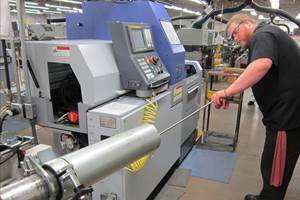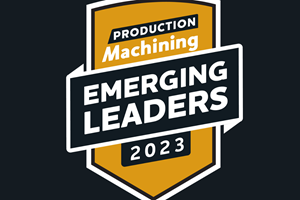Potential Job Turnover Crisis Looming
Employers need to address workers’ needs.
There is a massive disconnect between employee engagement in the workplace and employers’ lack of urgency to address this concern. The result of this slow reaction by employers, according to Monster.com, is 81 percent of employed workers are “very likely” to search for a new job within the foreseeable future. When compared with a similar survey conducted by the American Management Association that showed 61 percent of business leaders see nothing urgent in the job changing intentions of the workforce, a potential perfect storm of job changing and turnover could be looming on the employment horizon.
“America’s Workforce: A Revealing Account of What U.S. Employees Really Think About Today’s Workplace,” a March 2013 survey conducted by Kelton, garnered the following results and sheds insights as to why so many employees are open to new job opportunities:
- Employees feel discouraged: More than half (54 percent) of employees have felt frustrated about work.
- Manager/employee relationships need work: Only 38 percent of workers strongly agree that their manager has established an effective working relationship with them.
- People don’t understand strategic direction: About 40 percent say they don’t understand the company’s vision or worse yet, have never seen it.
- Innovation is being stymied: Almost 67 percent of American workers can name at least one thing that would prevent them from taking any kind of risk at work.
- Big picture contributions missing: Only 43 percent of workers say they feel accountable for the company’s revenue, profit or growth.
- Not leading by example: Only 26 percent of workers strongly agree that managers embody the values they expect from their employees, only 39 percent say their manager understands his/her role at the company, and 40 percent strongly feel their managers understand their company’s strategy or goals (Yikes!).
- Collaboration across teams is tough: Only 27 percent strongly feel they can depend on outsiders to fulfill their duties when working with other groups.
The barriers to employee engagement within most organizations start at the top with the president or CEO. New research from the United Kingdom’s Ashridge Business School provides some answers as to how CEOs are contributing to the problem of lack of employee engagement within their organizations.
The first barrier relates to shortcomings in leadership skills. CEOs believe engagement takes a particular set of competencies, such as the ability to forge deep trusting relationships at work, leading with emotion and authenticity, and operating with a genuine openness and honesty. Yet some of the leaders were wary of behaving this way, believing it would lead to dissenting opinions and personal criticism.
Second, CEOs recognized themselves as a potential barrier to engagement. They’re cognizant of the fact that some attributes of a leader’s personality can lead to traits or behaviors that could disengage employees.
Finally, CEOs acknowledged that organizational cultures, systems and hierarchies can be an engagement road block. Hierarchy creates physical and psychological barriers between staff and management, which prevent honest conversations from taking place, and CEOs are especially susceptible to this barrier.
Try being positive and play to the strengths of your individual employees and manage all of the employees the same—as individuals.
Blogger Steve Roesler points out that there is a relationship between how much an employee will love their job and how well they perform. Some people have to feel good about their job and their workplace before they can get busy and perform at their max. Others have to first achieve super results in order to feel good about their jobs.
Recognizing and praising the work of team members in a specific and detailed way helps the first type of employee “feel good” about their job and role in helping the team succeed. Recognition also shows those in the second group how their super results have not only been achieved, but noticed and valued by others as their efforts help achieve a greater mission.
Related Content
6 Tips for Training on a Swiss-Type Lathe
There are nuances to training a person to effectively operate a Swiss-type lathe. A shop I visited a while back offers some suggestions.
Read MoreSuccession Planning: Three 15-Minute Activities to Start Preparing for Tomorrow
Succession planning is planning for the future success of your business.
Read More2023 Emerging Leaders Strengthen Their Staffs, Solve Problems
Superb critical thinking, top-notch leadership skills and a passion for building a strong team are a few of the common traits held by this year’s five Production Machining Emerging Leader award winners.
Read MoreThe Value of Aligning Efforts to Promote Manufacturing Careers
Successfully building the next generation of manufacturers requires a team effort between employers, educators and parents. Each of these three groups has a tremendous impact on young people’s career decisions. Without the support of all three, we are unlikely to bridge the skilled labor shortage that threatens the future growth of our industry.
Read MoreRead Next
5 Aspects of PMTS I Appreciate
The three-day edition of the 2025 Precision Machining Technology Show kicks off at the start of April. I’ll be there, and here are some reasons why.
Read MoreA Tooling Workshop Worth a Visit
Marubeni Citizen-Cincom’s tooling and accessory workshop offers a chance to learn more about ancillary devices that can boost machining efficiency and capability.
Read MoreEmerging Leaders Nominations Now Open
Here’s your chance to highlight a young person in your manufacturing business who is on the path to be a future leader moving your company forward.
Read More














.jpg;maxWidth=300;quality=90)







